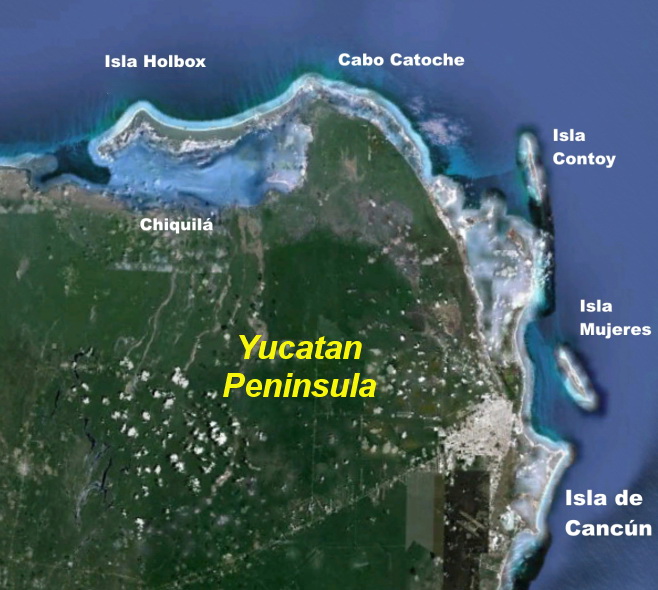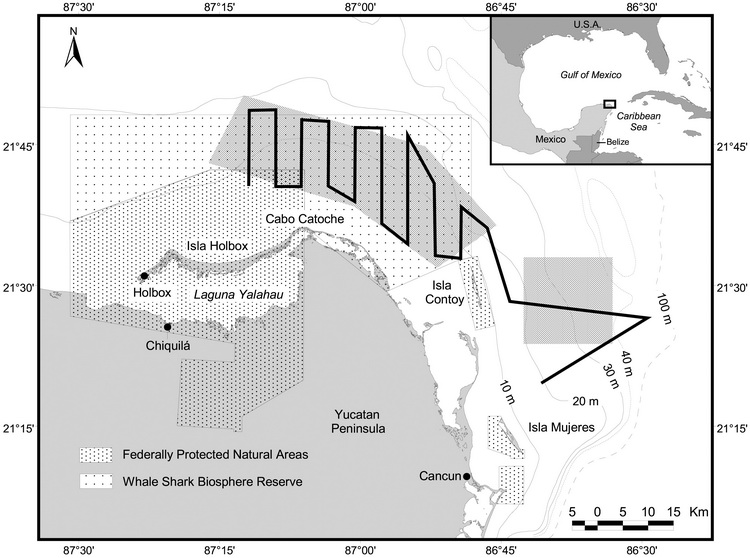The Whale Sharks of Isla Mujeres… Every year, as the summer heat descends on the Yucatan peninsula. A truly amazing phenomenon happens to the north-east of the small holiday island of Isla Mujeres.
Local fishermen call it the “Afuera’’ – Mexican for outside. In reference to those deeper waters offshore from the tip of the Yucatan. Where, come July and August, the largest known gathering of whale sharks (Rhincodon typus) takes place.
Long considered as solitary giants roaming the open oceans, aggregations seemed quite rare. And, prior to the discovery of the Afuera, a large gathering was thought to be 15 to 20 whale sharks. Typically those aggregations were associated with high seasonal concentrations of zooplankton.
But it seems that whale sharks are really quite social creatures when something special is on the menu. And the Afuera offers them something really different… An almost unlimited quantity of rich, energy-dense nourishment. With literally hundreds of whale sharks gathering to gorge themselves on this “all you can eat” buffet of nature.
The Afuera… Hidden in Plain Site
Incredibly it would seem that this massive aggregation has been happening for many years, generations possibly… All quite unbeknownst to either the scientific or ecotourism communities. But the local fishermen knew, and the first rumors apparently surfaced as early as 2002.
 However, at that time all the attention was on a different aggregation. The recently discovered gathering of whale sharks and manta rays in the shallow coastal waters of the northern tip of the Yucatan. Between Cabo Catoche and Isla Holbox,
However, at that time all the attention was on a different aggregation. The recently discovered gathering of whale sharks and manta rays in the shallow coastal waters of the northern tip of the Yucatan. Between Cabo Catoche and Isla Holbox,
The discovery of the “Cabo Catoche aggregation” led to a number of scientific surveys to quantify the population and dynamics.
Followed by the eventual establishment of a Whale Shark Biosphere Reserve by the Mexican government in 2009.
It also created a thriving and regulated ecotourism whale shark watching industry on nearby Isla Holbox.
So, it was not until September 2006 that the Afuera was actually investigated. When Mexican whale shark scientist Rafael de la Parra managed to organize a series of five aerial surveys.

Flight Paths of the Aerial Surveys in September 2006 – Courtesy of Rafael de la Parra
What the survey revealed astonished everyone involved. Because not only were the rumours true, but the numbers of whale sharks spotted were almost unbelievable. With a total of 480 sightings recorded in an elliptical area of open ocean of about 18 km2!

